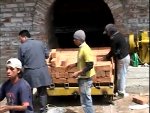September 2003
SofoNic Environmental problems (part 2)
"Remember, we have not inherited the world from our ancestors,
rather, we have received it on loan from our children.
Drought, exhausted or infertile soils, high costs of agricultural inputs (fertilizer and pesticides), along with low prices for farm products, intensified by the limited resources of the producers leads to inefficient use of these inputs or agricultural practices, resulting in low levels of productivity and profitability. Other difficulties are the high incidence of plagues and diseases, as well as the scarcity of feed for livestock during the dry periods.
CIDEM Involving students in research
Dynamic Regions
The housing deficit in southern countries is increasing steadily, as is migration to urban areas, while imports either from abroad or from urban centers remain the order of the day in the construction materials sector.
Bicycles have an impact in Carazo, Nicaragua
Bicycles have become something of a tradition in the department of Carazo, forming part of the local culture. Students, workers, women, even the elderly mobilize themselves with this environmentally friendly means of transport.



